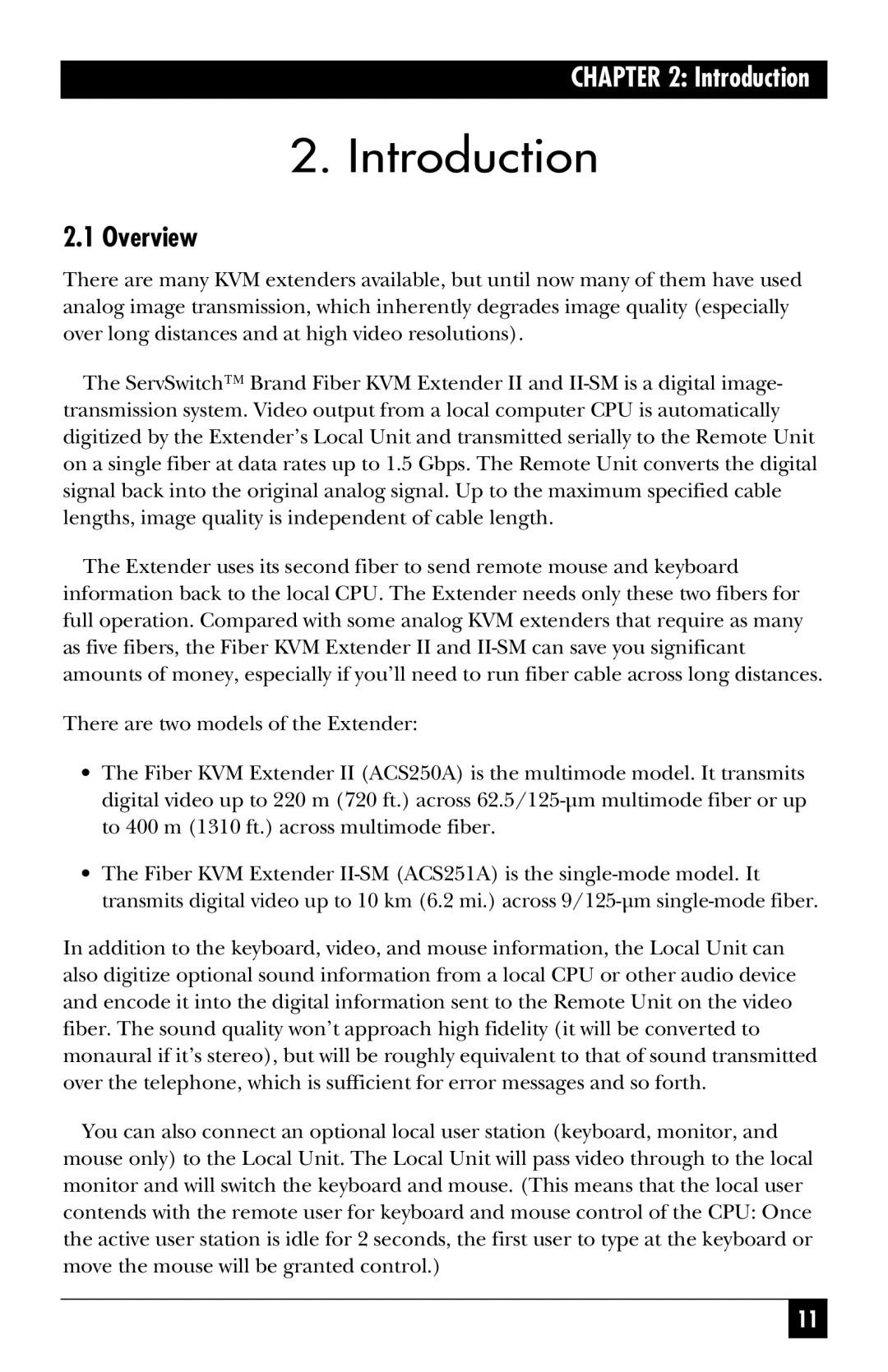ACS251A, ACS250A specifications
The Black Box ACS251A and ACS250A are advanced access control systems designed for businesses seeking enhanced security and flexibility. These devices provide comprehensive monitoring and control capabilities, making them essential tools for managing access to sensitive areas within a facility.Both models feature a user-friendly interface that simplifies installation and operation. The ACS251A and ACS250A support a variety of authentication methods, including card access, biometric scanning, and keypad entry, catering to the diverse needs of different organizations. This flexibility helps businesses ensure that only authorized personnel can gain access to restricted areas.
One of the standout features of the ACS251A model is its ability to integrate seamlessly with existing security systems. It can connect to various types of alarms, sensors, and CCTV systems, allowing for a more thorough approach to facility security. Furthermore, the ACS251A includes advanced reporting capabilities, enabling users to generate detailed logs of access activities. This functionality is vital for compliance and auditing purposes.
The ACS250A, on the other hand, is designed for smaller operations and offers essential features without compromising on performance. It also supports a similar range of authentication methods, making it versatile for use in various settings. The compact design of the ACS250A ensures that it can fit easily into different environments, enhancing its suitability for installations where space is limited.
Both systems utilize cutting-edge technology, including encrypted data communication to maintain security integrity. The ACS access control solutions also offer advanced security features such as anti-passback and time-zone restrictions, enabling organizations to enforce strict access protocols according to their operational hours or employee shifts.
In summary, the Black Box ACS251A and ACS250A are powerful access control systems that provide flexibility, advanced security features, and user-friendly operation. Their ability to integrate into existing security frameworks, along with their diverse authentication methods, makes them ideal for businesses of all sizes looking to enhance their security measures while ensuring ease of use and management. These systems truly represent a leap forward in access control technology, making them a valuable investment for any organization prioritizing safety and efficiency.

